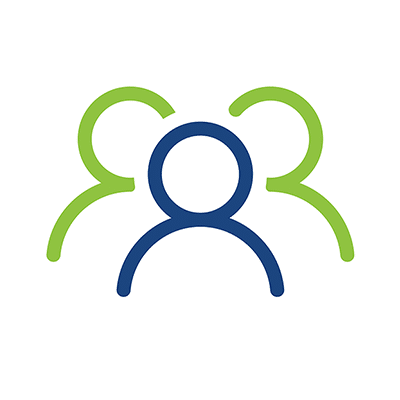Many people can’t escape childhood schooling or doctor visits without testing on an eye chart. The Snellen eye chart is the most common and has the classic appearance of large letters at the top of the page, slowly descending into wide rows of significantly smaller letters.
The Snellen eye chart and all standard counterparts gauge the quality of your vision, but how do these tests work? And what exactly does an eye chart measure? We’ll answer those questions and more below and give you an idea of what the results of your eye tests mean for your future.
Table of Contents
How an Eye Chart Works
Eye tests on standard eye charts are forms of visual acuity testing, a procedure where an eye doctor measures how far you’re able to see out of each eye with the chart’s help.
During a visual acuity test, your eye doctor will cover one of your eyes and ask you to read each letter on the chart aloud, starting from the most visible on top. You’ll either stop when you can no longer make out the constantly-shrinking letters or when you’ve read everything. The eye doctor will then cover your other eye, and you’ll repeat the process.
An eye chart won’t provide concrete diagnoses for severe vision problems, but it will give your eye doctor a baseline for how well you can see from a certain distance. That information will provide them with a sense of whether your vision is fine or whether you need further examination.
Common Eye Chart Variants
The Snellen eye chart is what most people use during standard eye tests. But several charts strive for the same results in different ways, and you might encounter each of them during vision acuity testing.
Tumbling E Eye Chart
The ‘tumbling E’ eye chart looks nearly identical to the standard Snellen chart but uses the letter E throughout, tilting it in four directions to distinguish each one. Eye doctors primarily use tumbling E eye charts for young kids who cannot read the alphabet.
The Landolt C eye chart is similar to the tumbling E but uses capitalized C’s rotated in four ways to gauge vision.
Jaeger Eye Chart
Unlike the Snellen or tumbling E eye charts, the Jaeger eye chart tests a user’s near-sighted ability by letting them hold the chart 14 inches in front of them rather than stationing it 20 feet away.
Jaeger charts don’t use individual letters, but rather blocks of text with multiple sentences like a book. Users read as much as possible without moving the test closer or squinting.
What Your Eye Chart Results Mean
Most people have heard the phrase “20/20” vision and assume it’s the best eyesight quality a person can have. And while eye doctors do use 20/20 as the standard for vision quality for children and adults, it doesn’t necessarily equate to perfection.
20/20 vision comes from a combination of two things. First, the eye chart you’re reading from during a standard vision acuity test will be 20 feet away. Second, a line on most eye charts constitutes the furthest the average tester can clearly read. If you make it to that line during your test, your vision from 20 feet matches that of most people; hence, 20/20 vision.
20/10 is the best score on a Snellen eye chart, which means you can see symbols from 20 feet away that the average person needs to be 10 feet away to make out. But Snellen eye chart scores go the other way if you fail to hit the baseline.
Any score at or worse than 20/40 (the average person can see at 40 feet away what you see at 20) means you can’t drive without corrective lenses, and 20/200 means you are legally blind.
What Causes Poor Eye Chart Results
Most vision problems occur naturally with old age. Some people are born with vision impairments in one or both eyes, but others with partial blindness notice symptoms after aging into their 40s.
Unfortunately, many standard vision issues are impossible to avoid. For example, people often lose sight as their lenses lose flexibility, while others suffer vision impairment from lingering health conditions like diabetes.
The best way to combat vision impairment through your 40s and 50s is with corrective lenses and regular visits to your eye doctor.
Do I Need Glasses? Optometrist Reveals the Cost of Neglected Eyecare
Dr. Bosung Kim explains the need for checking any changes in your eyesight to help protect you in the future.
Group Enroll: Find Employment Insurance with Quality Vision Coverage Today
Regular eye chart examinations are excellent to ensure your young employees’ eyesight remains strong. As your company gets older, the employee base will need more extensive vision coverage to protect their eyesight.
Group Enroll helps you find the quality coverage you’re looking for in a flash. We compare rates and coverage specifics from up to ten insurance providers and email you the best proposal within 2-3 business days.
Fill out our online form to get a quote today. For further questions, contact our team at [email protected]. Our office is at 10 Great Gulf Drive, Unit 5, Vaughan, ON, L4K 0K7.








